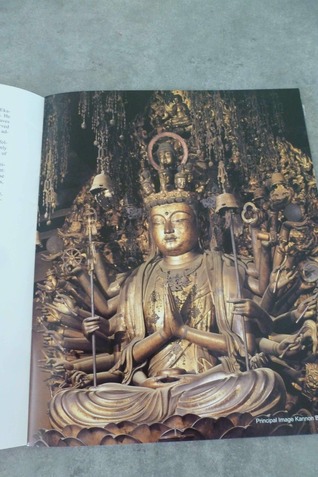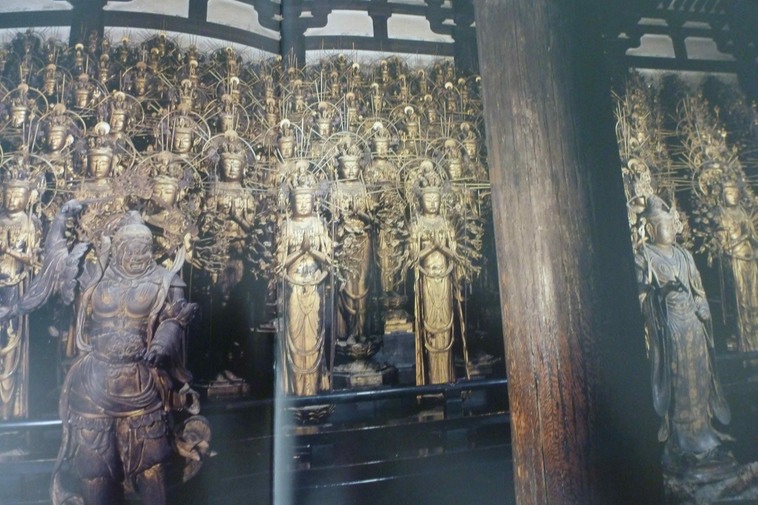
In other contexts, you might be tempted to use collection instead of assembly, but with a thousand life-size statues of the Thousand Armed Kannon standing in fifty columns ten rows deep around a seated Kannon bodhisattva (Sahasrabhuja-arya-avalokiteśvara) that dates back to 1254 assembly definitely seems the way to go.
If a thousand and one Kannons aren’t enough, the assembly is surrounded by twenty-eight statues of deities who guard the Buddhist universe, Kannon's disciples, who embody various virtues as well as two traditional Buddhist temple guardians: Raijin, god of thunder, and Fujin, god of wind.
Kannon is the bodhisattva of compassion, the statue radiates a peaceful and benevolent attitude, and the mathematics of a thousand arms takes a bit of explanation. The sculptures only show forty-two arms, along with eleven heads to give them a better grasp of the extent of human suffering.
The arms, according to the Buddhist belief, are supposed to fight off human suffering on twenty-five planes of existence, two of them are required for everyday purposes, and forty suffering-fighters across twenty-five planes comes to a thousand.
Simple, once you accept the multi-plane notion.
Of the thousand statues, one hundred and twenty-four were rescued from the fire that destroyed the original structure. The others, along with the centrepiece, were carved from Japanese cypress and covered with gold leaf as part of the reconstruction. Next...
